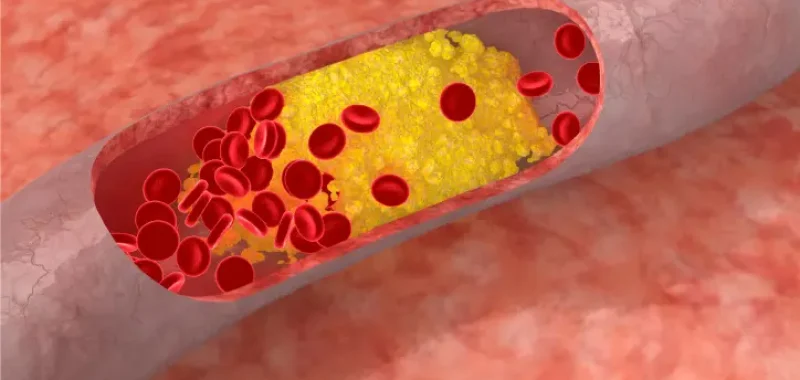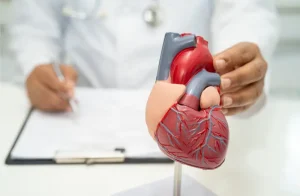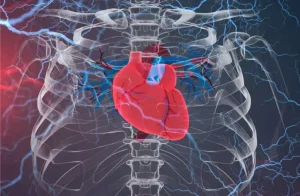Did you know that many people in America have high cholesterol? This common health problem can lead to serious heart diseases, and the numbers might surprise you. Why are so many Americans affected, and what can we do about it?
In this blog, we’ll explore how widespread high cholesterol is and why keeping cholesterol levels healthy is crucial. We’ll also look at simple steps to manage or prevent high cholesterol.
So, are you one of the many who need to be cautious? Read on to learn more about this important health issue and what you can do to improve your health.
Fast Fact About High Cholesterol Levels in Americans
A significant portion of American adults have unhealthy cholesterol levels 10% have high total cholesterol (over 240 mg/dL), increasing their risk of heart problems. 17% have low “good” cholesterol (HDL under 40mg/dL), further raising that risk.
Adults:
A staggering 86 million American adults have total cholesterol over 200 mg/dL (the borderline high level).Of those, 25 million have dangerously high cholesterol above 240 mg/dL.
Children:
About 7% of US children and teens have high total cholesterol, setting them up for potential health problems later in life.
Cholesterol Based on Race, Ethnicity, and Gender
Cholesterol levels, particularly high cholesterol, show significant variations across race, ethnicity, and gender. Understanding these disparities is crucial for targeted prevention and treatment efforts to reduce heart disease risk.
Here’s a breakdown of the prevalence of high total cholesterol (240 mg/dL or more) among adults age 20 and older in the United States from 2017 to 2020:
- Non-Hispanic Black Adults: Among this group, 6.9% of males and 9.3% of females have high total cholesterol.
- Hispanic Adults: For Hispanic adults, 9.3% of males and 10.0% of females have high total cholesterol.
- Non-Hispanic White Adults: In the non-Hispanic white population, 9.6% of males and 10.7% of females have high total cholesterol.
- Non-Hispanic Asian Adults: The data shows that 13.0% of non-Hispanic Asian males and 8.7% of females have high total cholesterol.
Progress Made, But High Cholesterol Awareness and Treatment Still Lacking
Researchers analyzed over 20 years of data from the National Health and Nutrition Examination Survey (NHANES) to track changes in high cholesterol rates among American adults. This reliable survey offers regular snapshots of our nation’s health.
There’s been a decrease in the percentage of adults with very high or untreated high cholesterol levels. This means more people are aware of their risk and are taking steps to manage it. However, millions of Americans still have dangerously high cholesterol.
High” Cholesterol: About 8% of adults have LDL cholesterol (the “bad” kind) in the 160-189 mg/dL range.
“Very High” Cholesterol: Approximately 3% have extremely high levels of 190 mg/dL or above.
What are the barriers to LDL Cholesterol Awareness?
There are several key barriers that contribute to the lack of awareness and management of LDL cholesterol levels. Here’s a breakdown of the most significant ones:

Patient-Level Barriers
- Lack of Knowledge: Many people don’t understand the link between cholesterol and heart disease, the difference between “good” and “bad” cholesterol, or the target levels they should aim for.
- No Symptoms: High cholesterol usually doesn’t cause obvious symptoms, leading people to believe they are healthy and don’t need screening.
- Fear and Denial: Some people may avoid getting tested due to fear of the results or a reluctance to make lifestyle changes.
- Cost and Access: The cost of cholesterol testing and treatment, as well as access to healthcare providers, can be a barrier for some individuals.
Healthcare Provider-Level Barriers
- Time Constraints: Doctors may not have enough time during appointments to address cholesterol management in depth.
- Competing Priorities: Other health conditions may take priority during a patient’s visit, leaving less focus on preventive measures like cholesterol screening.
- Lack of Awareness of Guidelines: Not all healthcare providers may stay up-to-date on the latest cholesterol guidelines.
System-Level Barriers
- Inconsistent Screening: There’s a lack of standardized cholesterol screening recommendations, leading to confusion and underutilization of tests.
- Fragmented Healthcare System: Poor communication between healthcare providers and a lack of integrated care can hinder effective cholesterol management.
- Poor Public Health Messaging: Public health campaigns about cholesterol risks and prevention may not reach all population segments effectively.
Addressing the Barriers
To overcome these barriers and improve LDL cholesterol awareness, a multi-pronged approach is needed:
- Patient Education: Increasing public understanding of cholesterol, its risks, and how to manage it.
- Provider Education: Ensuring healthcare providers have the knowledge and tools for effective screening and treatment.
- System-wide Changes: Implementing consistent cholesterol screening protocols and policies promoting greater access to affordable healthcare.






